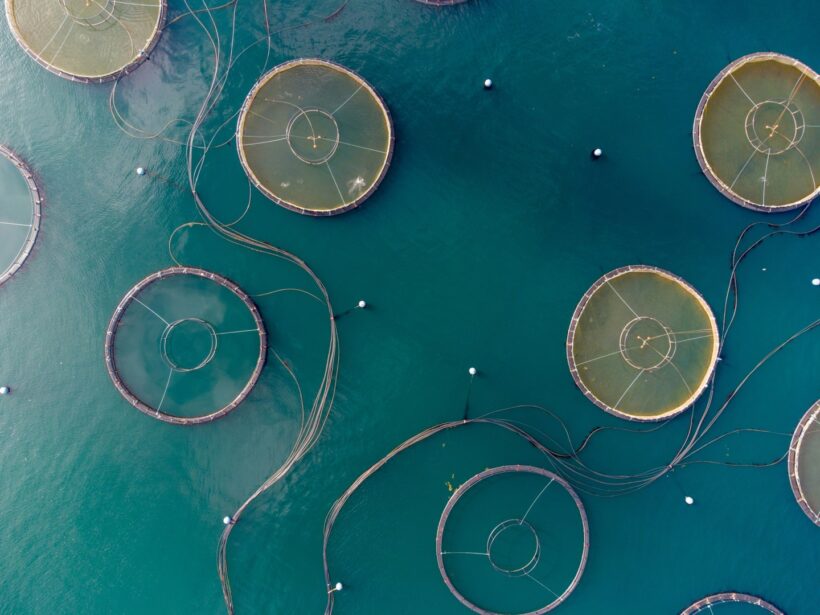For the first time, the amount of aquatic life — such as fish, clams and shrimp — that was farmed outpaced wild-caught aquatic life in 2022, according to the United Nations’s Food and Agriculture Organization (FAO).
By Paige Bennett
In the UN’s latest The State of World Fisheries and Aquaculture report, it found that aquaculture, or farmed aquatic life, produced 130.9 million metric tons in 2022. By comparison, the same year saw 92.3 million metric tons of aquatic life products from global capture fisheries. Inland fisheries generated 11.3 million metric tons, while marine capture produced 81 million metric tons.
According to the UN, this is the first time that aquaculture production has outpaced capture fisheries, although it said that both are essential for feeding the global population.
In total, fisheries and aquaculture production produced 223.2 million metric tons of aquatic life, most of which (185.4 million metric tons) was animals. About 37.8 million metric tons produced were algae, which is expected to be an important food source for the growing human population by 2050.
“FAO welcomes the significant achievements thus far, but further transformative and adaptive actions are needed to strengthen the efficiency, inclusiveness, resilience and sustainability of aquatic food systems and consolidate their role in addressing food insecurity, poverty alleviation and sustainable governance,” FAO Director-General QU Dongyu said in a press release. “That’s why FAO advocates Blue Transformation, to meet the overall requirements of better production, better nutrition, a better environment and a better life, leaving no one behind.”
The UN has noted that the rise in farmed fishing is a way to reduce food insecurity, as well as a way to minimize overfishing and unsustainable practices in the capture fishing industry, especially as the report predicted a 10% increase in aquatic animal production by 2032 to meet an estimated 12% increase in demand for consumption.
Overfishing is a major threat to aquatic life, contributing to the greatest rate of removing wildlife from their habitat than any other industry. According to the report, the amount of marine aquatic life that were fished within biologically sustainable levels declined in 2021 by 2.3% compared to 2019 levels.
But aquaculture is not without its environmental concerns. As KQED reported, aquaculture can pollute waterways from the excess nutrients and fecal waste generated in aquatic farms. For larger fish, smaller fish may still be wild-caught to feed the farmed fish. Farmed fish can also be vulnerable to disease transmission, and they may pass those illnesses on to wild fish, the U.S. National Oceanic and Atmospheric Administration (NOAA) reported.
As The Associated Press reported, some of the most farmed aquatic life include freshwater carp, oysters, shrimp, clams, tilapia and prawns. Some of the most common captured aquatic life include skipjack tuna, Alaska pollock and Peruvian anchovies.
Based in Los Angeles, Paige is a writer who is passionate about sustainability. She earned her Bachelor’s degree in Journalism from Ohio University and holds a certificate in Women’s, Gender and Sexuality Studies. She also specialized in sustainable agriculture while pursuing her undergraduate degree.






